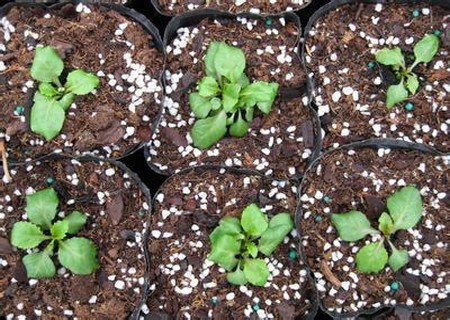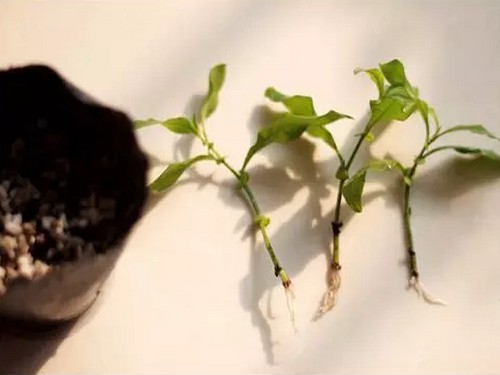The method of sowing and Propagation of Liuxili (Pieris sativus L.)
Liubili mainly treats snakebite, carbuncle, tonsillitis, eczema, tinea pedis, fall injury, damp-heat jaundice, appendicitis, enteritis, nephritis, cirrhotic ascites and a variety of cancers. Its unique blue flower variety is an important variety of flower bed flower in spring. The whole plant is swollen and round when it blooms, and the plant is almost full of flowers. it is suitable for flower beds, potted plants, hanging pots and gardens, and is widely loved by families in Europe and the United States.

[media]
Sowing medium is the key to the success of seedling rearing. In order to improve the seedling emergence rate, we must choose peat soil or grass carbon soil with loose air permeability, good water retention, PH value 6.5, low nutrient content and moderate particle size to raise seedlings. The proportion of seedling soil is as follows: rotten leaf soil 5, garden soil 3, river sand 2 or adding gravel and perlite to keep loose and breathable. When extracting pastoral soil, we should pay attention to the matrix salt transport should not be too high. Pay attention to herbicides and other pesticide residues, pesticide residues of formaldehyde will affect seedling emergence. When configuring seedling soil, carbofuran insecticides or carbendazim fungicides were properly mixed according to the dosage to prevent soil diseases or insect pests at seedling stage.
[temperature]
There is no strict seasonal restriction on the sowing date and often depends on the required flowering time. Seedlings can be raised in greenhouse or open field, but special attention should be paid to the stability of air temperature or ground temperature. Generally, the optimum temperature for seed germination is 20-25 ℃, and the ground temperature should be kept between 20-35 ℃. The temperature needed for germination should be fully guaranteed after sowing. While paying attention to a certain appropriate temperature for germination, we should also pay attention to the effect of temperature difference between day and night on seed germination. Generally, the temperature difference between 6-8 ℃ is more suitable. If the ground temperature is too low, an electric hotbed should be laid for improvement.
[humidity]
The optimum moisture content for seed germination is 95%, so adequate water should be given to the medium before sowing, not only to ensure sufficient water in the medium, but also to maintain a continuous supply of water in the medium, once the seed is absorbed, it can no longer lose water, otherwise it will affect the bud rate. On the other hand, it is equally important to maintain air humidity. When the general medium humidity is maintained at 30-50% and the air humidity is maintained at 80-90%, the germination rate can reach more than 80%.
[sowing method]
As the seeds of the butterfly are small, about 35000 per gram, and have the characteristics of good light, they should not cover the soil as far as possible when sowing, and only sow the seeds on the surface of the seedbed, so it is necessary to carefully set up the seedbed before sowing. In general, there is no fertilization in the seedbed. First irrigate the seedbed thoroughly, wait until the crack of the seedbed is seen the next day, use fine soil to irrigate the crack and pour through the seedbed again, and after osmosis, the seeds are evenly mixed with a certain amount of surface sand and sowed on the seedbed, which should be fine when sowing, and sow evenly many times. After sowing, do not cover the soil and immediately cover the small arch shed to moisturize, keep the seedbed moist, and emerge in about 7-13 days.
If the sowing amount is less, please make a small soil pool with a flat bottom in the greenhouse, spread a piece of plastic film on the bottom of the pool, use a seedling tray or a large plastic basin, burn several small holes in the bottom of the basin, and load the configured seedling soil in the basin. When loading the soil, it can only be loaded to 8-10 cm away from the mouth of the basin. After scraping, prevent the basin from being put into the prepared pool, and inject water into the pool. Two days later, after all the soil in the basin is permeated, the seeds are evenly mixed with a certain amount of surface sand, and the soil is not covered and the small arch shed is covered immediately after sowing. After that, the water in the pond should be kept regularly until after emergence, the water can be properly replenished according to the situation.
After sowing, trapping baits should be placed all over the seedbed to prevent irregular emergence caused by eating part of the seeds.
Six times the seed is small, sowing can be mixed with some fine sand before sowing, or the first seedling to the leaves 6-8 moved into the pot or flower bed cultivation, and the use of spray pot watering, must not be too strong, to prevent seed loss.
Sow from January to March, blossom after July, sow from August to October, and blossom in the second year. Liubili seeds can germinate 20 days after sowing at 22 ℃ and blossom 65 days after sowing, usually 8-12 seeds per hole.
Pay attention to loosening the soil and weeding at the seedling stage. Rare human feces and urine were applied once after planting, animal manure or ammonium sulfate and urea were applied once after harvest in summer, and rotten manure or compost was applied in winter. Irrigation should be followed in the dry season, and the economy keeps the soil moist to facilitate growth. Long-acting fertilizer should be added at the same time of planting, and then topdressing every three weeks or so, especially before flowering, more phosphate fertilizer should be added to facilitate flowering.
[seedling management]
After emergence, the air humidity and medium humidity should be properly reduced, and the decrease of air humidity can reduce the occurrence of diseases and insect pests, and the problem of medium salinization can be avoided when the air humidity is high, especially for some media with high nutrient content, more attention should be paid to air humidity, otherwise it is easy to form the phenomenon of salinization on the surface of the medium. The decrease of the humidity of the medium can not only reduce the occurrence of diseases and insect pests, but also be beneficial to the extension of the root system. when controlling water, it should be determined according to the growth characteristics of the seedling, too dry will inhibit the growth of slim, too wet is easy to cause quenching disease, the humidity of the medium should be reduced gradually, and the air humidity should be maintained, and water should be replenished immediately after 3-5 days of water control, and then continue to control water.
Time: 2019-06-11 Click:
- Prev

When is the seed planted?
The autumn sowing season has arrived, so, ready to sow, the problem has also come. Today I list some of the most common problems and share my solutions. I have had these questions and many of my friends have asked. The solutions I offer have been verified many times and are for reference only. Generally flowering in winter or early spring
- Next

Cutting method of Blue Snow Flower
I have blue snowflakes. I want to cut off a branch, pick the lower half of the leaves and soak them in water. Then, after a few days, the bottom is black and the top leaves are wilting. Then, cut off the black part at the bottom and continue to soak in water. Then, a few days go by.
Related
- Fuxing push coffee new agricultural production and marketing class: lack of small-scale processing plants
- Jujube rice field leisure farm deep ploughing Yilan for five years to create a space for organic food and play
- Nongyu Farm-A trial of organic papaya for brave women with advanced technology
- Four points for attention in the prevention and control of diseases and insect pests of edible fungi
- How to add nutrient solution to Edible Fungi
- Is there any good way to control edible fungus mites?
- Open Inoculation Technology of Edible Fungi
- Is there any clever way to use fertilizer for edible fungus in winter?
- What agents are used to kill the pathogens of edible fungi in the mushroom shed?
- Rapid drying of Edible Fungi

